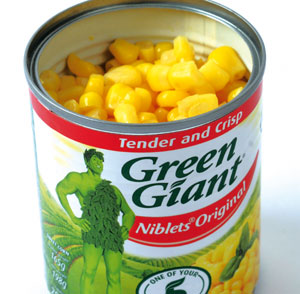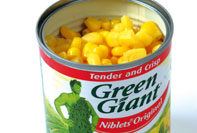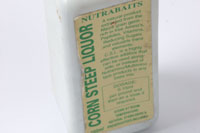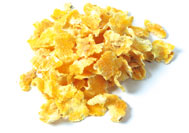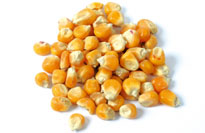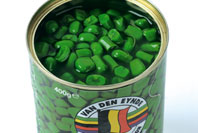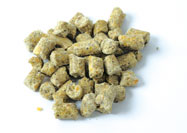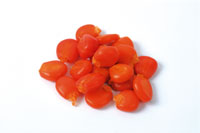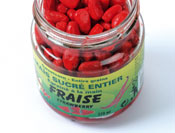What species can you expect to catch with sweetcorn?
Other than predatory fish most species will readily take sweetcorn – it’s a great bait for trying to pick off the bigger roach and bream in your swim and is also especially effective for targeting tench and carp, and on rivers will also be taken by barbel and chub. All in all it’s a great bait for mixed commercial fisheries.
When should you use it?
Traditionally anglers have seen sweetcorn as a warm weather bait and certainly it works really well through the late spring to autumn on most venues. However, the boom in the commercial fishery scene has also shown that corn can work superbly well in winter too, especially in conjunction with hemp loose feed. In summer the sweet smell of the corn will draw fish to the bait even if the fish are very active and the water is coloured. But in winter when the water tends to be clear, a bright yellow grain of corn on the bottom is very easily seen by the fish. As with all sorts of fishing you can be much more aggressive with your feeding in summer. In colder weather cut right back on the amount of corn you feed.
Sweetcorn on summer commercials
In the last 12 months or so some pole anglers have been doing exceptionally well feeding a lot of sweetcorn and cooked hemp at some of the top commercials like Makins Fishery in the Midlands. We’re talking about getting through 12 big tins of corn and six pints of hemp in five hours. The reason is to get fish on the bottom where they are easier to catch, and keep them there. You feed a big pole pot full of hemp and corn from well off the surface of the water to create a lot of noise and draw fish to the feed. You then fish over the top with sweetcorn hook bait and the carp come straight to it. But you have to keep doing it to keep catching, hence you get through a lot of bait. On the feeder if you are expecting a big weight, fish sweetcorn hook bait with only pellets through the feeder. However, if you expect things to be tougher, using some fishmeal groundbait through the feeder as well will both cut down on the amount of pellets you feed and create a fish-attracting cloud.
Sweetcorn on winter commercials
Corn still works well in colder water but your feeding regime needs to be very different to the summer months. On the pole we’re talking about kicking things off with perhaps only five grains of corn and 15 grains of hemp, and then feeding again every 20 minutes or so, or after every fish. On the running line, rather than fish the feeder, the bomb is usually a better approach. With this you are looking to catch fish that are already there so there is no need to feed anything – just fish two or three grains on a hair rig. In milder spells it can pay to have five or 10 casts with a small feeder filled with pellet before fishing the bomb and corn over the top.
How should you hook it?
Corn has the advantage over many baits of having a tough skin with a soft inner. The skin means that it stays on the hook well and can be cast on the feeder, lead or waggler without coming off. On the feeder especially many anglers hair rig two or three grains these days, which doubly ensures that the hook bait stays on and gives you a self-hooking set-up. If you are side hooking a single grain, bury as much as the hook into the grain as possible in winter but make sure the hook point is penetrating through the skin so that it will prick the fish when it takes the bait. The best ways to hook corn are shown in this guide. Corn can even be used for fishing up in the water on the drop. Simply give a grain a squeeze and hook a skin on, and you have a slow-sinking bait that can catch fish of all species.
Is one brand of sweetcorn as good as the next?
For general coarse fishing you should look to use the best human grade corn you can and in our view there’s nothing to beat Jolly Green Giant. Look for the corn in saline – salt is an excellent appetite stimulator. Use the same corn as feed as you use on the hook. Where you are looking to target bigger fish on venues where small fish are a nuisance, and where you intend to leave a bait out for a long time, corn with a harder skin will come into play more, which is why big fish anglers tend to use the hard-skinned maize more than corn (see question below).
Is coloured/flavoured corn to catch anglers, or can it really catch more fish?
In summer when you’re feeding a lot of corn, we don’t think colouring or flavouring makes any difference. Fish like carp and tench will move into the swim and hoover up corn en masse. In winter it’s a different story. Fish will pick up only the odd grain and something a little different might just get you extra fish. tcf’s Alex Bones likes to use a spicy flavour in cold weather, flavouring up his corn the night before fishing. The bottom line with flavour and colours is that if they give you more confidence you will fish better with them, so use them!
Why do some anglers always rinse their sweetcorn before using it, while others always keep the juice?
The sweet juices from a tin of corn can be great to use for mixing up a dry groundbait mix, adding extra attraction. However, if the juices start to dry on your hands they become very sticky. Match anglers in particular can’t afford to have sticky hands when shipping a pole for instance, so they tend to rinse all the juices off. We’d encourage you to do this at home as it’s not good practice to take tins to the bank. Simply pour the corn onto a sieve or pinkie riddle and rinse under a tap for a few seconds, then keep the corn in a sealed plastic food bag or bait tub until you need it.
What’s maize and when would you use it?
Maize has traditionally been seen as a cheap, bulk bait that is used a lot in France, for example, and so it is still underused in this country. As with any particles, maize can be tailored in many different ways during the preparation process – colours, sweeteners, flavours and all manner of enhancers can be added to create a bait that is as unique as you choose. However, it is in its most basic form that maize continues to score. When fishing such popular particles as hemp and corn – a deadly combination on many carp waters – maize provides the perfect hook bait. Impervious to small, nuisance fish, yet imitating a large piece of corn, stack-baits of three or more pieces of maize often prove extremely effective. It is in this hook bait form that maize continues to be popular – there are even plastic imitation versions now, which could ultimately replace maize hook baits altogether. Maize will continue to be a popular bait on the crayfish and poisson-chat (small catfish)-infested Continental venues, not least because a sack of dry maize can be bought for as little as £15 for 25kg. Once prepared, this would provide at least 35-40kg of useable bait – significantly cheaper and easier to transport than boilies. We show you how to prepare maize in this guide.
When is flaked maize useful?
This is another very inexpensive bait for the big-fish angler that is great for bulking out feed. When neat the flakes are crisp, but when soaked in water the bait becomes very soft and so is best fed with groundbait in balls if you need to get it to the bottom in a relatively tight area, or it can be mixed with other particles and spodded if you are happy for your bait to spread around a bit as it sinks. Apart from that lovely sweetcorn smell, flaked maize has two other benefits: it’s very light in colour and thus can act as a visual attractor to draw fish down to your bed of bait once on the bottom; but perhaps more importantly it creates a lovely milky cloud when soaked that leaks off the bait once in the water and draws fish in – indeed a good tip is to add this juice to your groundbait when you mix it up.
Amaizing Baits
A rundown of corn-related products that will help you put more quality fish on the bank.
|
|
||||
|
|
||||
|
|
||||
|
|


